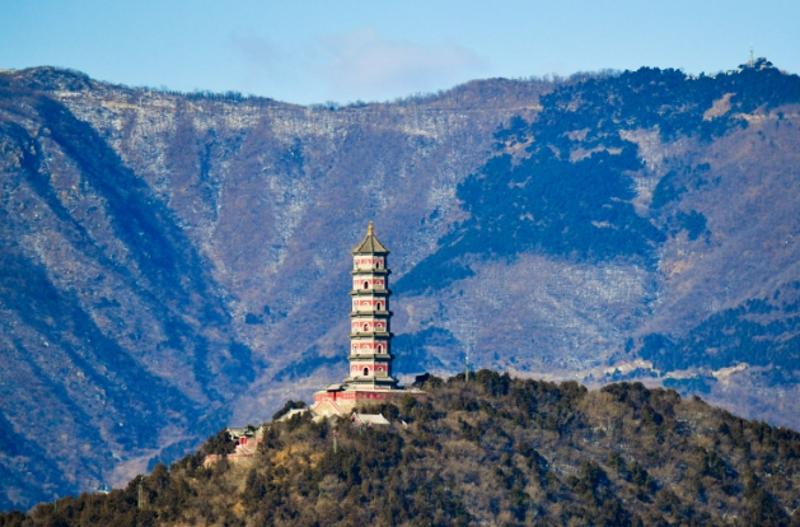Beijing Xishan: A Blend of Natural Beauty and History
1. Basic Introduction to Xishan
When we mention Beijing's Xishan, it's not just a simple geographical name. Xishan generically refers to a series of hills and mountains in the west of Beijing. These rolling hills not only add a magnificent landscape to the capital but also carry profound history and culture.

2. Deep Dive into Xishan
2.1 Geographic Location
Xishan is actually an extension of the Taihang Mountains, stretching from north to south on the western side of Beijing. This vast area covers approximately 17% of Beijing's total area, mainly involving Mentougou District and Fangshan District. The terrain here is diverse, with steep hillsides and gentle hills, providing a unique natural barrier for Beijing.
2.2 Physical Geographic Features
The altitude of Xishan varies, with some places featuring steep peaks and others relatively flat. The vegetation here is rich and diverse, ranging from deciduous forests at lower altitudes to coniferous forests at medium altitudes, and alpine meadows at higher altitudes. The babbling streams add infinite vitality and dynamism to this land.
2.3 Resources and Economic Activities
Besides the beautiful natural scenery, Xishan also hides rich mineral resources, especially coal. In the past, coal mining was the primary economic activity here. However, with increasing environmental protection awareness, many mining activities have gradually ceased or been restricted.
2.4 Natural and Historical Attractions
Xishan is a mysterious and legendary place. There are deep valleys, healing hot springs, ancient temples, and more. Every rock and drop of water seems to tell ancient stories.
2.5 Cultural and Historical Significance
2.5.1 Historical Culture
Historically, Xishan was once a place of solitude for many scholars, writers, and religious figures. They sought inspiration here and wrote countless masterpieces that have been handed down through the ages.
2.5.2 Modern Historical Significance
In recent history, Xishan also played a crucial role. Mao Zedong once lived here, and during that time, he deeply pondered national affairs and made significant decisions for China's revolution and construction. During the Anti-Japanese War, the Political Bureau of the CPC Central Committee also briefly retreated here to continue leading the anti-Japanese struggle.
2.6 Famous Locations and Events
2.6.1 Famous Parks and Temples
Nowadays, Xishan has become a popular destination for Beijing residents to relax and vacation. The red leaves of Xiangshan Park, the exotic flowers and plants of Beijing Botanical Garden, and the ancient Buddha statues of Wofosi Temple are all favorite attractions for visitors.
2.6.2 Olympics Related
During the 2008 Summer Olympics, Xishan also became the venue for mountain bike races, where athletes from around the world showcased their talents.
2.6.3 Archaeological Discoveries
It's worth mentioning that fossils of "Peking Man" were once discovered in Fangshan District, providing valuable clues for us to understand the life of ancient humans.
2.7 Military Significance
In addition to its cultural and natural significance, Xishan also holds important military value. It is rumored that there is an underground command center of the Chinese military here, which is a crucial part of national defense security.
In summary, Beijing's Xishan is not just a mountain range with beautiful natural scenery but also a place that carries profound historical and cultural heritage. Whether it's the secluded place of ancient literati and scholars or the historical stage of modern revolutions, it has endowed this land with legendary colors.
Q1: What is the geographical significance of Beijing's Xishan?
A1: Beijing's Xishan is an extension of the Taihang Mountains, located on the western outskirts of Beijing. It not only provides a magnificent natural barrier for the city but also adds a unique landscape to the capital. The area is rich in natural beauty, featuring steep hillsides, gentle hills, and dense vegetation, making it a popular destination for outdoor enthusiasts and nature lovers.
Q2: What are some of the cultural and historical attractions found in Beijing's Xishan?
A2: Beijing's Xishan is steeped in history and culture. It was once a place of solitude and inspiration for many scholars, writers, and religious figures. Some of the cultural and historical attractions found here include ancient temples like the Wofosi Temple, known for its ancient Buddha statues, and parks like Xiangshan Park, famous for its red leaves during autumn. Visitors can also enjoy the exotic flowers and plants at the Beijing Botanical Garden.
Q3: What is the modern historical significance of Beijing's Xishan?
A3: In modern history, Beijing's Xishan played a crucial role. It was here that Mao Zedong once lived and deeply pondered national affairs, making significant decisions for China's revolution and construction. Additionally, during the Anti-Japanese War, the Political Bureau of the CPC Central Committee briefly retreated to the Xishan to continue leading the anti-Japanese struggle. The area also hosted events during the 2008 Summer Olympics, specifically mountain bike races, further highlighting its modern historical significance.